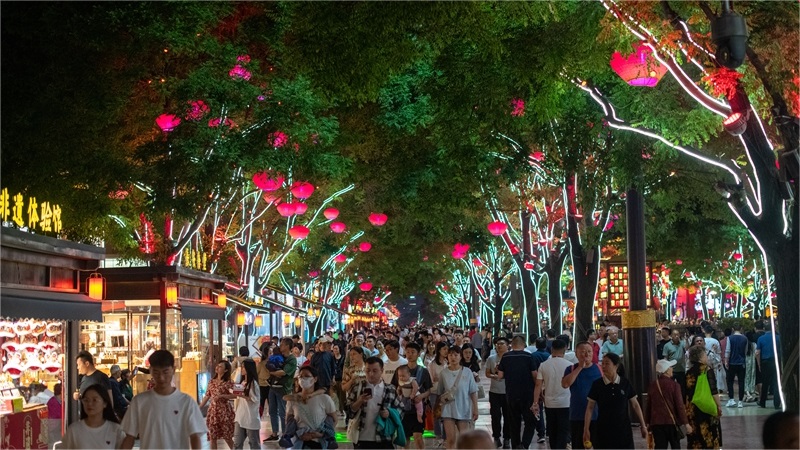From robots to peacocks, the evolution of China's factories
SHANGHAI, May 24 (Xinhua) -- Robots taking over, lights out, peacocks strolling idly... those are the factories we are talking about in China.
The adoption of advanced technologies such as robots, artificial intelligence, industrial Internet, and big data is transforming traditional factory environments. The outdated impression of factories with roaring machines and loud conversations is steadily fading away.
At a digital factory of Shanghai Automotive Industry Corporation, more than 400 robots tirelessly operate, with a new car rolling off the assembly line roughly every 70 seconds.
With the help of image recognition technology, the body assembly robot can accurately find the corresponding engines of different models from the stack. At the same time, the tire mounting robot can complete the assembly of a car's four tires by itself.
Here, the complex process does not require manual intervention, and a single assembly line can realize the mixed production of multiple models.
Shanghai is the first city in China to count robot density -- the number of robots per 10,000 employees. At present, the robot density of key industrial enterprises in Shanghai has reached 426 units, leading the international field.
According to an action plan issued by the central government in 2023, by 2025, China's robot density in manufacturing sector will double from that of 2020. While in Shanghai, the robot density in key industries will reach 500 units in 2025.
What comes into view at Shanghai-based JAKA Robotics factory are rows of big and small robots with various functions -- applying glue to bluetooth headphones, welding for automobiles, cleaning super large astronomical devices...
"Based on AI and big data, our robots' intelligent perception, trajectory planning, operational accuracy, and interaction ability are constantly optimized," said Li Mingyang, president of JAKA.
Walking into the cold-rolling workshop at Baosteel in Shanghai is like entering a dark steel jungle.
The "AI brain" supports the main control room with only three operators. Robots have replaced manual work in the workshop, so the lights are often turned off to save energy. Even automotive panels that require high process complexity can still be smoothly produced with almost no lighting.
As the "world factory," China has been the world's largest market for industrial robots for 10 consecutive years, and its share of global installed capacity increased from 14 percent in 2012 to 52 percent in 2022.
There is even a zoo built by Baosteel not far from the factory, which keeps peacocks and sika deer. The environmentally sensitive animals are the best reminders of any changes to the environment around the factory.
Steel plants, once deeply bound with "pollution," have become the vanguard of green manufacturing.
Baosteel has built a smart carbon data platform that includes carbon accounting, carbon assets and carbon footprint, so that every steel product provided to downstream users has a "carbon trace" to follow.
In March, China's first batch of low carbon emission silicon steel products were produced here. By reducing the consumption of raw fuels such as ore, coal and coke in the smelting process, the carbon footprint of the product was reduced.
"By 2025, we will have the technical capacity to reduce carbon emissions by 30 percent, and plan to achieve carbon neutrality by 2050," said Liu Shijun, deputy general manager of operation center of Baosteel.
Photos
Related Stories
- Students from Harbin Institute of Technology showcase tech marvels in Heilongjiang
- Industrial robot makers gear up for global expansion
- China's humanoid robot market to hit 10 billion yuan, eyes 119 billion yuan by 2030: report
- Tea picking robot operates in harvest season
- China's Northwestern Polytechnical University develops AI robotic guide dog
Copyright © 2024 People's Daily Online. All Rights Reserved.









